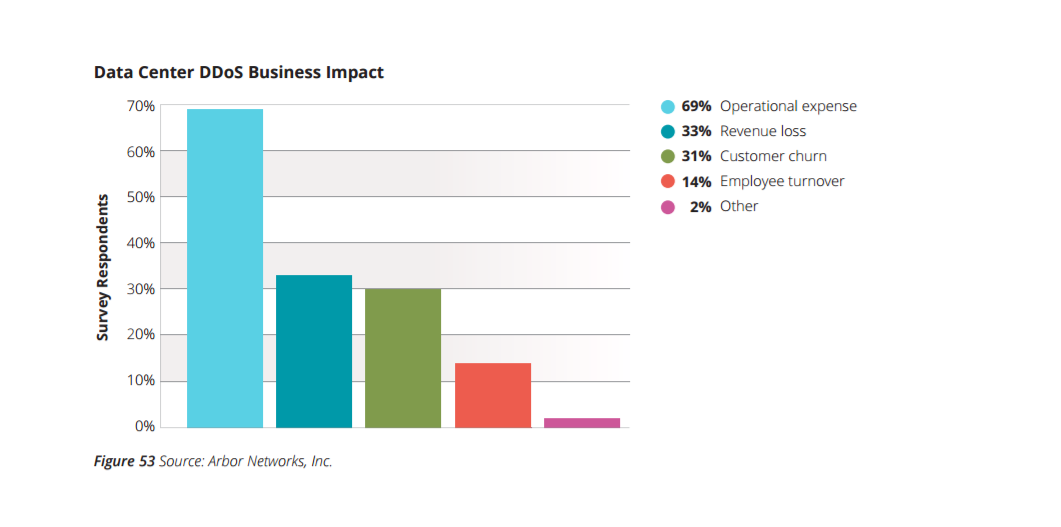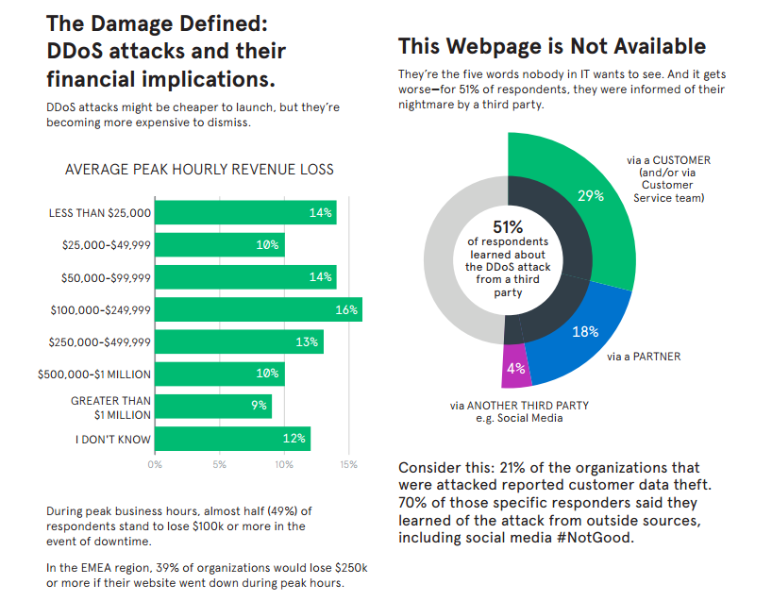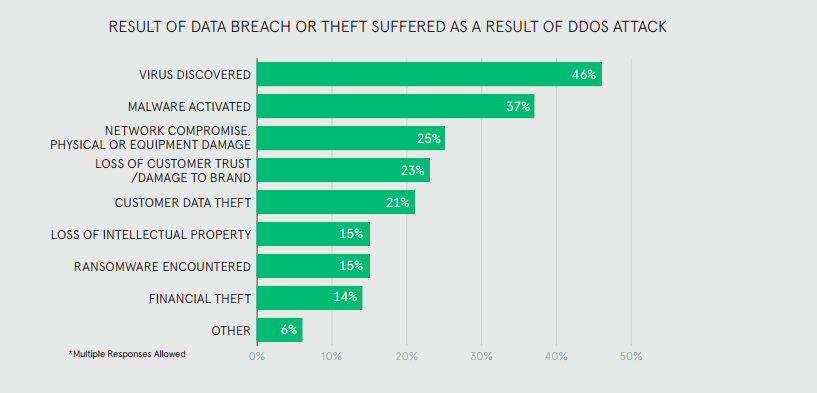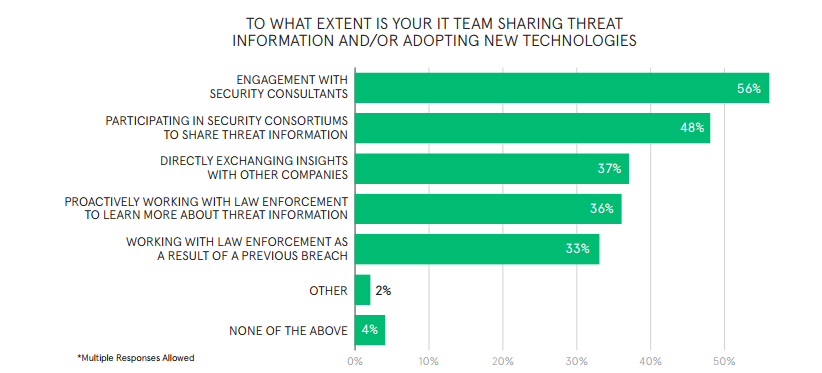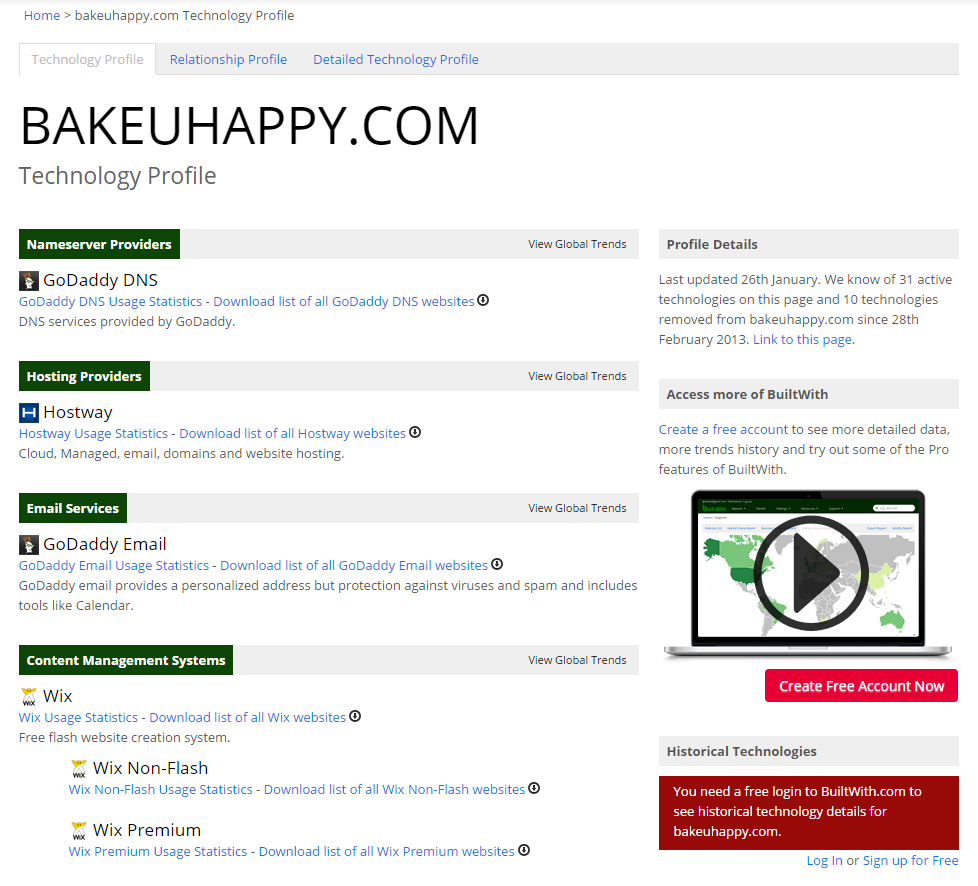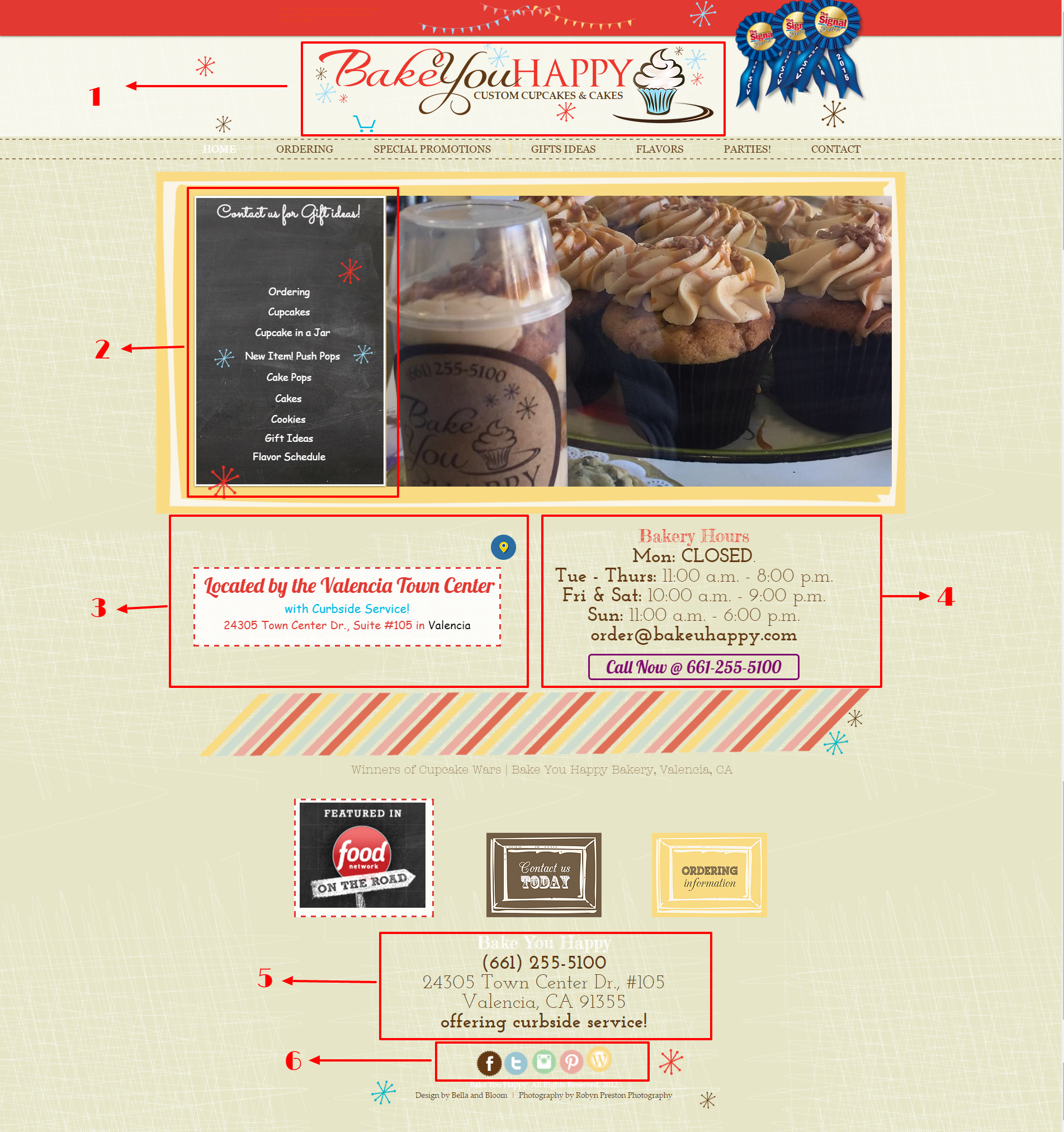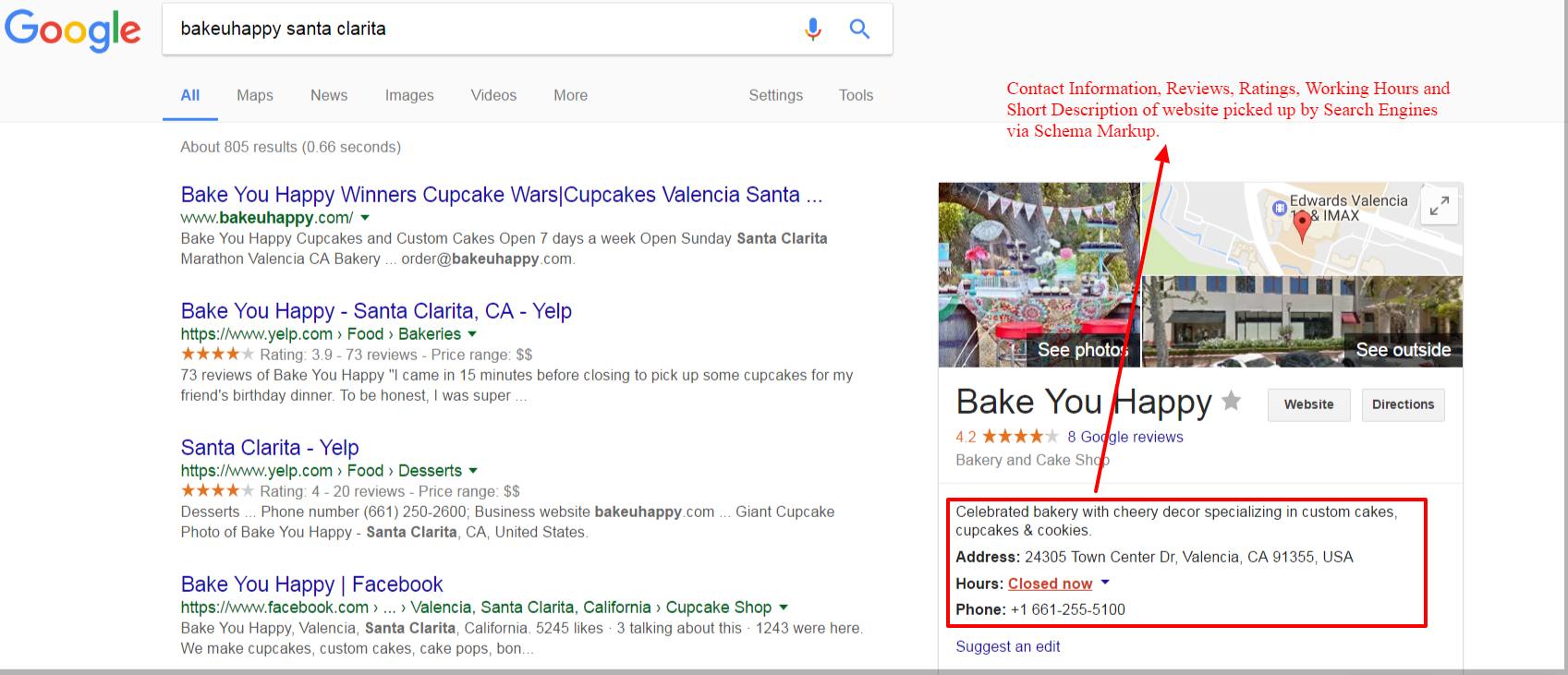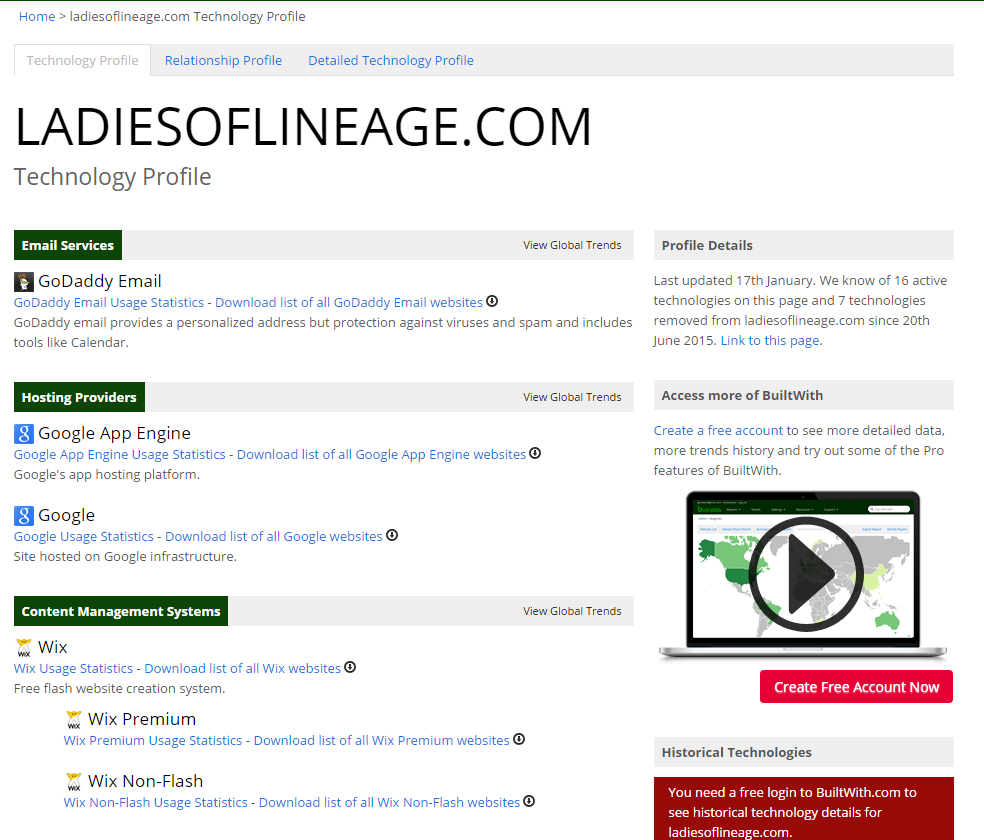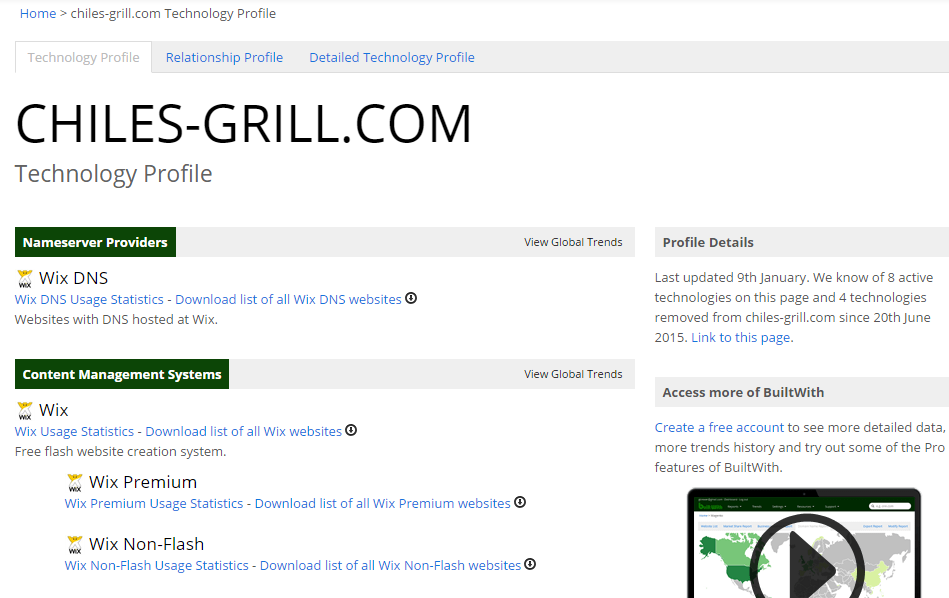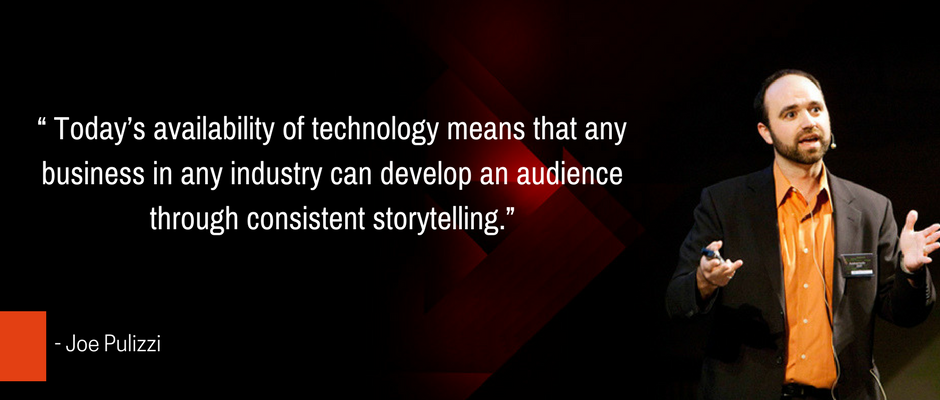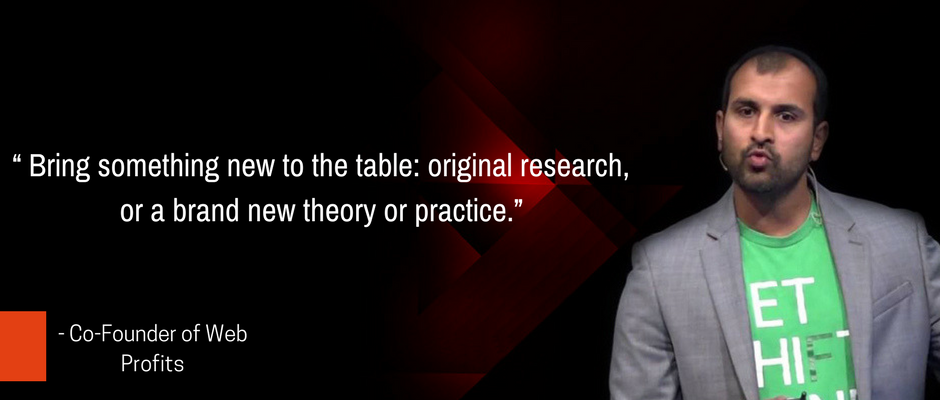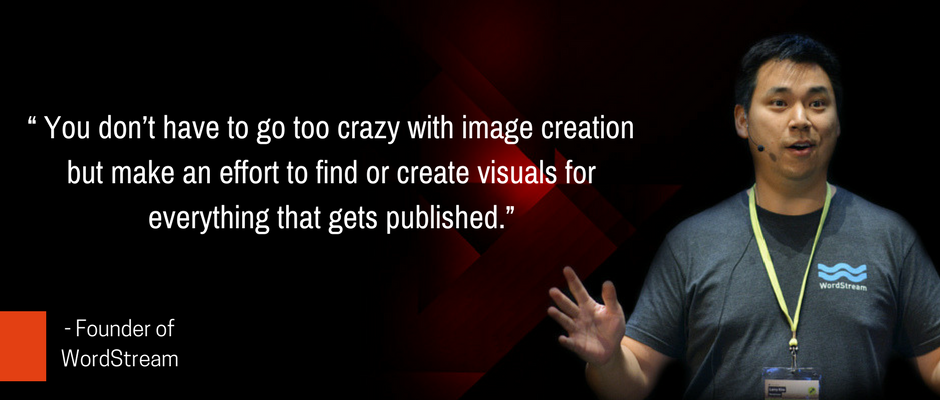Have you heard of the term “web hosting?” Before we get into understanding the concept of “web hosting,” let’s understand what hosting means. Hosting is the physical computer where the website is situated. Or in other words, it’s the server that delivers the files that the visitors of the site require.
Web hosting can end up being a tad confusing, especially if you want to launch your website and have no idea how to go about it. Yes, the concept is extremely technical and might be completely strange to you, but it is fun once you get the hang of it!
If you are planning on launching a website, the first thing that you must do is hosting. Hosting will provide the place where you will put all the information that will be displayed on the website. It should be kept in mind that a great host will make your website fast.
A Study from Hostingfacts found that

Now if you want to launch a website, but aren’t being able to wrap your head around concepts like Apache, PHP Load, and PHP, it’s suggested that you entitle the task to a tech expert. If you are looking for a tech expert to help you with the website host, then look no further, since we are here to help.
We will help you understand the concept with basic terms and explanations and make the technical jargon easy to comprehend. Not only will we break down the technical concepts to help you get a better idea, but also help you understand the basic things that you need to consider when hunting for a host. We assure you that the whole idea might sound daunting, but with our help, it will be a cakewalk!
Know What You Need
Before you start figuring out about web hosting, you need to know exactly what you want. To understand your requirement for a web host, you need to answer certain fundamental questions that will help you get a clearer idea of your requirements.

1. Will You Lose Income or Visitor If Your Site Droops Down?
This question is crucial since you will face the ramification whenever your site goes down. The option you pick will help you decide the hosting you need to invest in.
2. What Kind of Traffic Will Your Site See?
Give some thought to the present level of traffic that your site experiences and make a future projection based on it.
3. How Fast Do You Want the Site to Be?
The kind of host you use impacts the speed of your website. You will need to decide if a slow site will hamper things or create a bigger problem and go ahead with a particular host.
4. How Much Space Does the Site Need?
The kind of content your site contains will determine the space it requires. If your site doesn’t have much media-centric content, you will make do with limited space, but if it includes images and videos, then storage needs to be considered.
5. What Are Your Specific Needs?
You need to decide if your need is based on other sites that need hosting. If you have several URL redirects or have e-commerce wants and even allow space for email, then your hosting preference will change accordingly.
6. How Much Control Do You Require?
The hosting will depend on what kind of control you need. You can choose between being an average user, or going ahead and testing many configurations, or even making advanced installations.
7. How Do You Plan to Seek Help?
There are lots of ways to ask for help. You can either go for the phone, email, online forums, or ticket-support systems. Which one you favor for the particular website will determine the hosting you need.
It might not be possible to have all the answers before you start, but if you have a basic idea about these seven questions, the selection process for web hosting will be easier.
What Are the Different Types Of Hosting?
There are different types of hosting, and each one is unique. Given below is a basic outline of the various types of hosting, which will help you get a better idea about the concept before you start working on it.

1. Shared
Shared hosting would be the most common and inexpensive hosting. Most people start with shared hosting and works well for most of websites. Shared hosting involves multiple sites using the same server. Each customer website gets a chunk of the server and must remain within the set limit.
Possible drawback:
While the price for shared hosting is cheaper than the rest, it comes with some major problems. The first and foremost would be the issue of space. With many websites sharing a single server, it might so happen that one site enjoying a lot of traffic will slow down the rest. Overloading issues shouldn’t occur with a good host, but it is one of the biggest problems faced when using shared hosting.
Pricing: $4-15 per month.
2. Virtual Private Server
The Virtual Private Server (VPS) is a hosting that uses software to run quite a few sites on a single server, in a way that they function like dedicated servers. Even though multiple sites share the same server, the software in place makes it feel like a dedicated server for the website. Even though the VPS server is costlier than Shared server, it is customizable, faster, and more secure. Since the server doesn’t slow down other sites, because of increased traffic on any one site, it is an excellent choice for growing websites.
Pricing: $15-150 per month.
3. Dedicated Hosting
If you have a site that requires a lot of space, then Dedicated Hosting is the best choice for you. This host will offer your site its very private server, where you don’t have to share with anyone. Dedicated Hosting ensures a more secure site with faster speed. Users will also not face any impact from other websites. There are plenty more options to pick from for different price ranges.
When you pick Dedicated Hosting, you have the option to choose between managed and unmanaged dedicated hosting. When you go for managed hosting, the hosts provide you with technical help who assists you to handle the server and carry out upgrades. In unmanaged hosting, you have to perform these tasks on your own.
Pricing: $100-250 per month.
4. Cloud Hosting
This is a new method of hosting that has recently gained a lot of importance. In Cloud Hosting, your site is not associated with a single server; it is linked to different servers in several locations. Cloud hosting minimizes the downtime for the website since it is readily available in the cloud. It is the perfect choice for websites that cannot have downtime.
Possible drawbacks:
Setting up Cloud Hosting tends to be complex. It is also more expensive than the other hosting options available in the market.
17 Factors to Consider Before Choosing a Web Host
Deciding on which web hosting option to pick can be a difficult one, especially if you are a newbie when it comes to running a website. Multiple companies in the market promise to fulfill all your requirements and offer similar prices. In such a situation, it can be tough to pick one company out for your hosting option. Given below is a list of factors that will help you make the right decision when it comes to selecting a web hosting company. Most reliable web hosting companies have a dedicated page, where they mention the perks of joining their company. However, you should still do your due diligence and find out whether what they claim is true or not.

- Price: The first factor we consider when we pick anything is pricing. However, it isn’t the right way to head when it comes to web hosting. When you choose a company that offers you low prices, you need to be prepared for a service that meets the bill. You have to realize that employing a suitable host costs money and you cannot get the best non-outsourced support and hardware at a low price. Do not compare solely based on prices. Compare the services that the companies are providing and then consider the pricing. Another thing you need to keep in mind is the purpose of the website. If your site is meant for personal reasons, then going for free hosting makes more sense for you.
If you are confused, you can always head to HostMonk, which is a website that offers a comprehensive list of all the hosting companies along with their different packages. WHReviews is another good site to head to before making your decision.
Tips: Small businesses can consider domain hosting, colocation or standard paid hosting. When you go for domain hosting, you only have to pay for the domain name of your website. This is the perfect option for those running on a small budget and who want to use a site with Tumblr or WordPress.
- Specialties Offered: There is a host of companies offering you web hosting services. However, you need to realize that not all of them are suited for your need. Each customer has a unique need, and they should head to a company that can meet them. The key factor determining your choice of hosting company should be one that caters primarily to your needs and the specialty of your website. Talk to customers who have already availed of the services of these companies to get a better idea.
- Technical Specifications: How your site functions will go a long way in determining the web hosting company you would want to associate with. If your website is rich in content or is an e-commerce site, then you shouldn’t go for a cheap plan since that won’t have enough RAM and processing power to support your traffic. Select wisely to avoid downtime and load issues. Before zeroing in on a host, check if they charge for additional domains, support, and backups. You need to contact the company and be very clear about how you want your website to grow and make sure that understand your vision completely.
- Technical Support Offered: Since you do not have a clear idea about your host, it will be difficult for you to deal with the technical problems for the same. When you go ahead and pick up a company, make sure that you can access a real person during a crisis. This individual would help you realize what’s the problem and also help you solve it.
You need to check on the customer reputation of the company. See how they can be contacted and whether they are available 24X7 since you never know when you might need them for your website! Just like host companies are different when it comes to their pricing, they are different in their technical support as well. Carry out some extensive research to pick your preferred company.
- Features Offered: When it comes to choosing between so many host companies, it always boils down to what extra the company offers that the others don’t. Several companies will go the extra mile to win a potential customer. They might offer you multiple data centers, free domain privacy, data backups, energy-saving practices, and much more. If you find a company that offers services and features that you require, beyond and above what they usually offer, you will know that you have found a good host company.
- Additional Features Offered: The hosting companies might entail more cost, but they are worth it. Some of the extra services that these companies offer include email services, where you can create your email address. This goes a long way in making your business more professional. An e-commerce website needs a secure server where the customers can carry out safe transactions. These services help build a reputation for your company and will assist you in the long run.
- Hardware: What kind of hardware the company uses will decide on the quality of the service provided by them. If the company isn’t very open about the server that they use, it is time to look for other options. A company that uses modern, state-of-the-art machines as compared to one that uses chicken wires and spare parts, will offer you a better service.
- Customer Reviews: The most honest opinion about a particular hosting company can be derived from the customers. You need to connect with the existing customers and also carry out a blog search on the internet to find out reviews on the different hosting companies. The customers will honestly tell you if the technical support is easily reachable, and what is the average time for them to respond to, and what is the kind of service that they provide. You can visit websites like Web Hosting Talk, LifeHacker, and Web Hosting Jury for customer reviews.
- Reputation: The customer reviews will help you get a clearer idea about the reputation of the web hosting companies. Make sure that you get a clear picture of the company’s reputation before you start working with them. Each of these companies will have their testimonials and statistics mentioned. Check out hosting forums also to see how they are perceived by the text experts.
When you are trying to get a clear idea about the company’s reputation, also check up on their uptime statistics. The uptime percentage will help you see how frequently the hosting company’s sites are live. The higher the percentage, the better it is. Make sure that you go for a company that has a rate close to 100% since an issue with the hosting company will slow down your website. If the website is slow, the visitor will not be able to access the site and are then less likely to return for the second time, and you lose out on traffic.
- Spam and Email Practices: If you have an email option in the website then make sure that your hosting company has a solution to tackle spam problems. Consider their spam solutions and email practices before you decide to work with them.
- User Interface: No matter how technically sound you are, there are some issues about web hosting that might not be your cup of tea. If you don’t know how to install WordPress or set up an email or FTP account, you need to find a hosting company that will do it for you without any additional cost. Make sure that the company has cPanel or Plesk for updates and doesn’t use the complex interface that might be difficult to figure out. Since you will be the one to work on them, it will be difficult if you can’t find your way through them.
- Space for Growth: Another crucial thing that you need to consider when selecting a hosting company is whether they can fit into your plans. What might be adequate for you now, won’t be so in the future, when the website grows. As a web-based entrepreneur. you need to focus on growth and hence shouldn’t consider hosting companies that won’t accommodate the future growth in the company. If you are availing of Shared Hosting, check if the company offers VPS and Dedicated Hosting solutions and how easy would it be to update your account.
- Usability: Usability will be important if you are new to the world of web hosting and have no clue about coding and other technical know-how. Usability can also give you more freedom to customize the website and offers more hosting options. When you are considering usability make sure that the hosting company offers you Plesk, cPanel, ISPConfig or ispCP. These programs will help you customize and set up your website even if you are unfamiliar with the file transfer protocol. FTP is necessary if you want to upload files to the site, which include header images and logos.
- Don’t Just Go By The Big-Names: Just like cheap hosting companies might not offer all the services you want, the big names might also not offer you everything you want. These web hosting companies might have built their brand, but it is easy to get blindsided by their success and not pay attention to their hosting solutions. Don’t go for a company simply because they have a good reputation in the market, make sure that they offer you the services that you require.
- Security Strength: Since you are placing all your website’s information in the host, it is mandatory that you consider a company that offers the best security strength. The customers will share all their information with you, and it is your responsibility to secure them. When considering security strength, look into the daily backups of the web hosting company. You cannot afford to lose the content of the website without a backup to retrieve them! Keep an eye on the SSLs. When you design an e-commerce website but don’t plan on using third-party service for the client’s payment data, you will need SSLs. You also need to scan for malware and help the site from being blacklisted. A SiteLock will take care of this and will also help you gain the trust of the customers.
- High Traffic: If you are looking to create a website that will see a huge amount of traffic, you must consider a company that has the capability to handle that amount of traffic and doesn’t cause the site to crash.
- Zero Downtime: Downtimes will make your website slow. It doesn’t matter even if that happens in the middle of the night since a site will be accessed by visitors from all over the world. The downtime will make things difficult for your website, and you will have to make sure that you go for a hosting company that upgrades their system to avoid downtime.
How to Choose the Right Host for Your Site
Now that you have a comprehensive list of all the factors that you need to consider when picking a host for your website, it is time to get some nuggets of advice that will help you select the right hosting company. Given below is a list of wisdom that will assist in making the selection process easier.

1. Reputation:
You might have understood by now that the reputation of the company is of prime importance. How long a company has been around and how quickly they respond to complaints and whether they offer immediate technical support, will help you make sure that you get the best service. Be very direct with the host, ask them questions, and satisfy all your queries. If you find them lacking somewhere, don’t hesitate to keep looking.
2. Find the Limit of the Unlimited Package:
Even before you get into the world of websites, you must realize that there’s nothing called “unlimited.” Even the unlimited has a limit, so don’t be fooled by the hosts that offer you unlimited storage and data transfer. It is bait waiting for you. The limits are mentioned in the service agreements and contracts, and you might have to plow through them to find it out, but be rest assured that it is there! There are chances that the host company might keep changing their limits without warning or leave things undefined, so you should be very clear about it from the beginning. While storage and data transfer numbers are crucial, what matters primarily is the PHP memory, which you will run out of first.
3. Be Sure About the Uptime Guarantees:
Before you sign a contract with a web hosting company find out their uptime guarantee. Even if they offer 99.9% uptime ensure that still includes eight hours of downtime every year. Analyze if your business can function with this. This might not pose a threat to smaller businesses but could become a major deal-breaker for larger ones.
4. Be Sure About the Refunds:
It might so happen that the hosting company might not be able to provide you with satisfactory service or you might find a better deal else. In such a situation, it would help if you can avail of a refund. Make things very clear with the web hosting company from the very beginning. What if they mess things up or if their server crashes or if you ever want to end the contract with them, if you can avail a refund.
5. Location:
Yes, you read that right! Location does matter even if the website is global. If your server is located on the other side of your primary customers, then things will slow down. If you are concerned about the speed, then you need to place importance on the location of the servers used by the hosting company.
6. Be Open to Moving:
There’s no harm in moving your site. If you feel that the service of the hosting company isn’t good enough or that the service is too expensive, you can easily move your website. If you find the price steep in the initial months, this expense will only increase with time, and you should switch to a cheaper option if you don’t want to keep paying the steep amount.
7. Customer Service:
The one aspect if always tend to look past is the customer service offered by a company. However, this cannot be the case when you select your web hosting company. If your website crashes at 3 am, customer service will be the first one you will try and contact. No service will matter if you cannot get instant help when your website is in a crisis. Firstly, you shouldn’t face many problems, and even if you do, you need to be confident about 24X7 customer service for the same.
So How Will You Decide If the Customer Service Is Best Suited for You?
- They will be prompt. The best customer service is one that responds to your problems instantly. Depending on the situation, a wait time of an hour is the maximum you can afford for your website. You would not want to be associated with a company that offers a wait time of 24 hours for a crisis.
- They should be helpful. Customer service will be the first point of contact when you face a crisis, and they should be capable of making you understand the problem and offering you a quick solution. If they are evasive or cannot provide useful information, then you will be in trouble.
- The customer service should function as you want them to. Some companies send in technical support to work things out for you, or there are some that respond and offer solutions via telephone and chat. Go with the one that suits you best.
8. Security:
Security is another aspect we don’t give much importance to until something goes wrong. You will realize that most of the host companies don’t talk about the security option. This is because they don’t want everyone to know about their system. However, some hosts brag about their system, and that is when you know that they have something unique and are using it as a selling point.
- Check online and read reviews to find out about the kind of security offered by the company.
- You should check for network firewall, intrusion prevention system, server firewall, and access lists to make sure that the hosting company is providing the best security.
- The best option is multiple layers of security.
- Also, make sure that the company updates its security patches at regular intervals.
9. Amount of Control You Enjoy:
Since it is your website that we are talking about, you will have some amount of control over it. However, the amount of control you enjoy depends on the level that the host company offers. If you are using shared hosting, you might not enjoy the same amount of control as you would enjoy with a dedicated server. No matter what type of hosting you go with, a good host makes sure that you have an ample amount of control and access to your website.
- Many hosts offer a control panel with a lot of functionality. While you may not need so many, it is always better to have access to these. You may end up requiring them when you least expect it.
- Make sure that the control panel you have access to is a cPanel since they are the best and the most popular. If you are clueless about the cPanel, you can go through the online tutorials for the same, to gather your information. Given the popularity of the cPanel, you might not have to relearn a new system in case you change the host.
10. Avoid Overloading:
One of the primary problems faced by the world of web hosting is overloaded servers. Many hosts cram too many sites into a shared server to increase their earning, and this often ends up affecting the websites. The overloaded server only makes your site slow and unavailable because other websites are enjoying all the traffic and bandwidth. The only problem is that you cannot find out if your company is overloading the server.
- Check the other websites on the server and see what their speed is. Also, check the speed of the host’s site to see how fast it is running.
- You can also ask around or read the reviews.
11. Check If the Company Offers FTP Access:
Find out if the host company offers FTP access. It is the easiest way to connect with your site and upload files. You will need FTP even if you want to install WordPress yourself. If the web hosting company doesn’t offer FTP, they will allow you to upload the files with the help of a web interface. The method works, but FTP is quicker and easier to access.
12. Check for Upgrades:
You need to remember that your website will not remain this small in the years to come. You have a big dream, and you should make sure that your hosting can make that a reality. Before you associate with the company, check on their upgrade options. You might not need them right now, but you will need them in the future, and it doesn’t harm to have an idea about it.
- Don’t believe whatever the company tells you and don’t upgrade if you see that the next package offers an “unlimited” option. You don’t need it right now, and it will only cost you money.
13. Email:
The easiest way to make your business look professional is to make your business email. Most of the host companies offer emails, but it always helps to clarify them in the beginning. See what features they offer and if it serves your daily needs.
- Make sure that the company allows all emails to be rerouted to your domain.
- Check for the availability of autoresponders.
- See if you can forward your emails to an existing account. This is helpful you already have an email address and don’t want to keep a tab on multiple accounts.
- Make sure that you can access your email via IMAP and/or POP3. The POP3 access will help you check your email via Outlook.
- Also, look for web-based solutions.
While the aforementioned points should be considered before selecting the host company, here are some more points that will help you pick between two options that are equally perfect for you.
14. One-Click WordPress Install:
WordPress is easy to install, but it becomes easier when you have a hosting company that offers one-click WordPress installation. This helps if you want a hassle-free approach when setting up the website. Here’s the catch- if you go for one-click installations, you usually have to make do with security issues and slower upgrades.
15. Reselling Options:
Host reselling is a feature that will help advanced users. Reselling is a common practice for web developers since it gives them the opportunity to build the site and host it. If you want this option, look for the reselling opportunities offered by the host. Many hosts offer unbranded solutions for you to make the hosting environment suitable for your branding. Privilege server offers great reseller hosting packages to get you started.
16. Affiliate Cash:
If you aren’t planning to resell hosting, you might be offered affiliate dollars by the host company. The affiliate cash will help pay off in the long run. You can also make do without managing ads or links and can still end up making some cash.
17. Registration of Domain Name:
Some hosts allow you to register your domain name. While it might be a good option to combine your hosting and domain registration, this might become a problem if you want to change hosts in the future. Many hosts own their URL and license it to the website, so it might be difficult to transfer the URL to another host if there are billing issues. It is a smarter move not to combine host registration and domain name since that might force you to remain with the host even if you want an out.
18. Domain Parking:
This is a rather common practice in the world of web hosting. Companies end up purchasing all the domains that are similar to their name, including the misspelt ones so that they can get the traffic. Host allow domain parking, but there might be some limits on how many URLs you can redirect.
19. Backup:
It is crucial to have a backup system on your site. This will help you if you delete a folder accidentally while tinkering around the FTP program. Trust us when we say that these blunders have to even the most technically sound person. To avoid such situations, hosts offer daily backups, which will restore whatever gets deleted. Be very clear about the backup options provided by the company, and it is safer to have your backup options in place, like the BackupBuddy.
20. E-Commerce:
If you want some additional functionality like e-commerce, you will be able to get them from your host company if you ask them for it. These out-of-the-box solutions may not be customizable like many WordPress plugins, but they will work fine for any basic requirements.
21. One Place for All Sites:
If you have a long list of websites and can’t stop buying interesting domain names, then it is best that you host all of them together in the same space. Many companies offer options to keep multiple sites, which is called Addon Domains. Check and confirm if the company you want to work it offers the feature.
10 Questions to Ask Your Web Hosting Provider Before You Make the Final Decision
You cannot compromise on your website and the security of your customers. One of the key points to remember before you go ahead and create your online presence is the choice of the web hosting company that you associate with. Many factors determine your decision. Here is a list of 10 questions that you might ask the hosting company, to make an informed decision.

1. What Is the Security Policy That You Follow?
The security policy followed by a hosting company will offer you an insight into the company. There a lot of varieties to pick from. Many companies offer you server space and a connection while deciding to give you free rein when it comes to the security of the content. On the other hand, some companies carry out malware scans, monitor the traffic of the site and offer denial-of-service mitigation. You also need to be sure that the security updates happen very frequently.
2. How Do You Handle Breaches in Security?
One of the key security concern is when the security precautions fail in certain cases. In such a situation, it is often the hosting company that finds out beforehand and needs to ensure the safety of the visitors. It is important to know how and whether the provider will attempt to tackle the situation and how long will they take to identify the crisis and work to solve it. Also, what happens if you find out about a breach and how soon can you get a reply from the company after you report the issue to them?
3. What Is the Platform Under My Application?
Closely related to the issue of security is the server platform used for your website. You need to know which server your CMS application is installed on and how it is secured from breaches. Generally, the underlying platform is protected by server software like IIS and Apache. A knowledge of this is crucial since these platforms often require to be restarted for maintenance and you will not know how to do so if you don’t have any idea about the platform. Every time you restart for maintenance you cause downtime, and you will have to maintain the delicate balance between operations and security.
4. Is SSL (HTTPs) Offered?
SSL is usually offered as a premium hosting service and not as default. It so happens that the cost for the SSL is not considered when you are looking for the price of the server and the end figure might drastically change once it is factored in. In such a situation, it is important that you know whether it is required. The SSL will make the website secure, especially if you plan on employing username and password, as in many e-commerce sites. The HTTPS will ensure that the data fed in by the customers become encrypted before they are sent across the internet. There are different levels of SSL certificates that you can consider.
5. Do You Backup?
Backups are crucial for security and continuity of the website. The backups help if there is equipment failure at the host’s end and if there is a security compromise in the website. When you know that your data is backed and you can restore it easily, you will have the option to deal calmly with such situations. Injecting an SQL will compromise the website easily, and a backup will help recover the database and restore the files in the web folder. Lastly, make sure that the backup data is located off-site since keeping it on the site might subject it to the same risk as the website.
6. Who Is Responsible for CMS Platforms and Installations?
Most of the hosting sites have pre-installed content management software. However, it is crucial to know if the installed version is the latest build and whether it gets security updates regularly. Many hosts allow users to upload their CMS platform and they also provide the option to allow the customers to keep the software updated.
7. Can I Disable Applications and Service Not Required?
This question might sound simple, but it is important, If you want a blog and not a forum, you might want the option to remove it. Unused applications might only increase the threat of an attack. There are initial server configurations that allow you to select the applications you want to use with the option to make changes in the future. You can also disable the unused features.
8. Who Will Update the Applications and Software?
Attackers love unpatched applications. WordPress, Joomla, Movable Type have all seen vulnerabilities. If you leave these vulnerabilities unpatched, then you allow attackers to compromise your website. Most of the malicious websites are in fact victims of a compromise. You need to be clear about whether the host will offer to update applications that they don’t provide.
9. What Kind of Security Monitoring Is Employed?
If your site is compromised, how will you find it out? This is where the security monitoring comes into the picture. It would be better if you were the first one to find this out rather than your visitors finding it out via security software. The situation becomes a lot less embarrassing, and you can fix the problem immediately.
10. How Are Uploads Secured?
The content of the website is crucial, and you need to ensure that only you have access to it. The content is usually updated by FTPs, but they aren’t secured, and there have been cases where FTP credentials have been stolen. A better option then would be to use Secure FTP for the content.
Before You Go!
If you have any doubt about hosting options that will be best suited for your requirements you can hit me up in the comments section below, contact me via our Facebook page.
Till then,
Happy Hosting!












































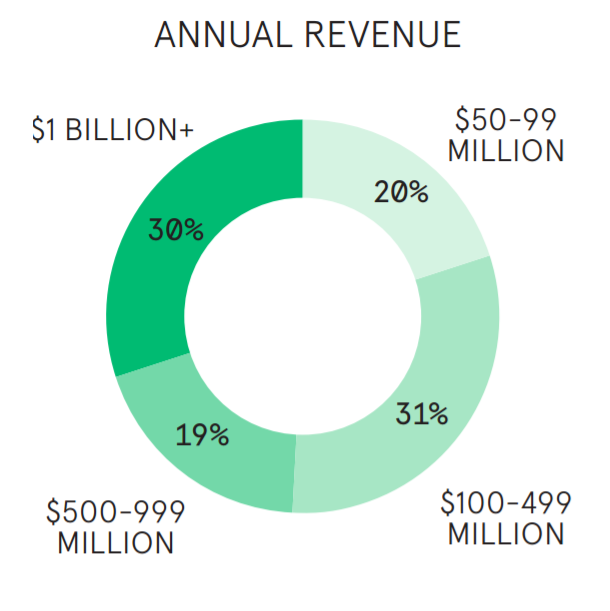 Annual Revenue of Respondent Organizations
Annual Revenue of Respondent Organizations